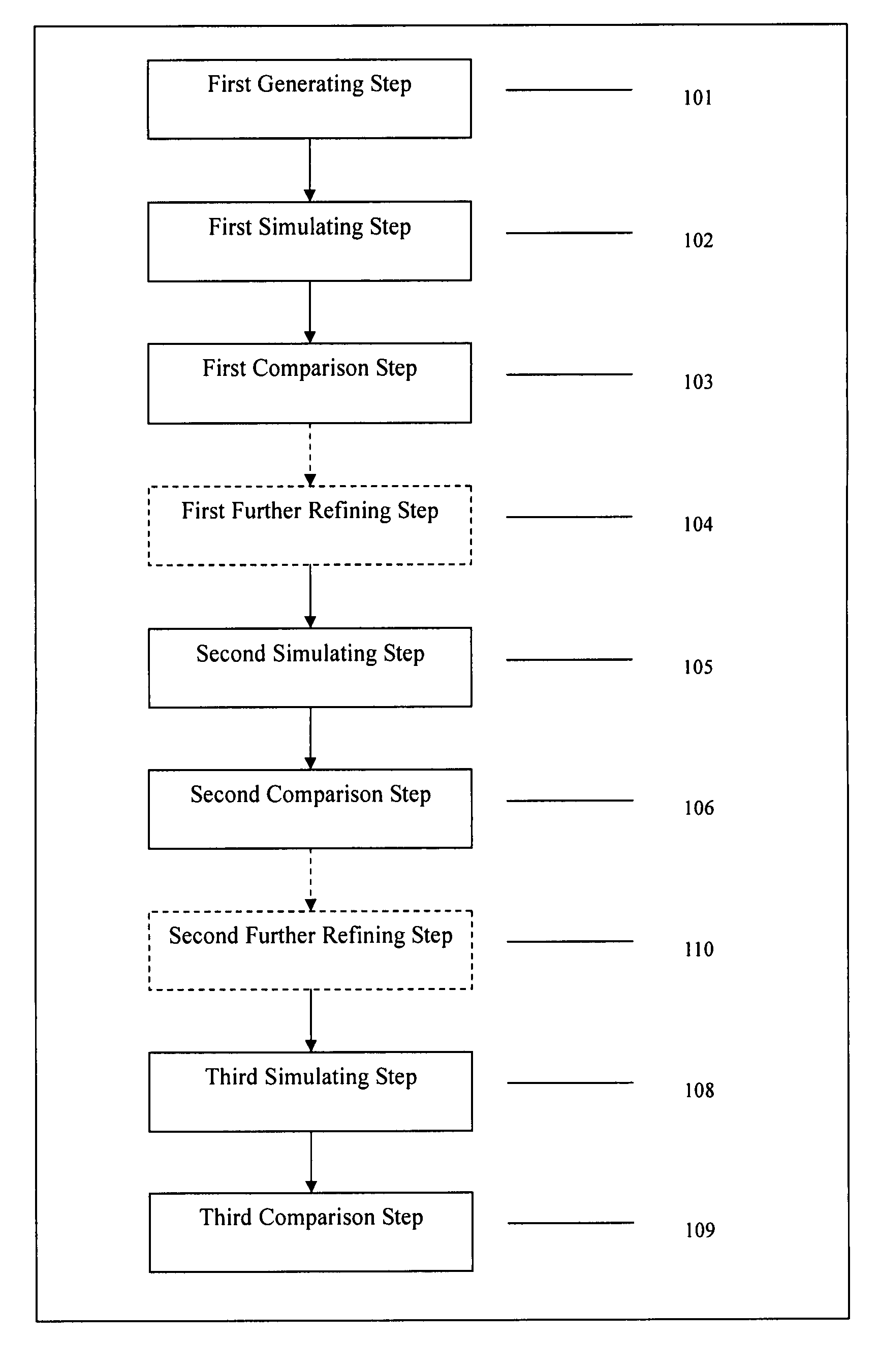System and method for evaluating petroleum reservoir using forward modeling
a petroleum reservoir and forward modeling technology, applied in stochastic cad, instruments, borehole/well accessories, etc., can solve the problems of large computer cpu power consumption, inability to use recorded raw measurement response on its own, and high computational cost of inversion method, so as to achieve less cpu time. the effect of demanding
- Summary
- Abstract
- Description
- Claims
- Application Information
AI Technical Summary
Benefits of technology
Problems solved by technology
Method used
Image
Examples
Embodiment Construction
[0018]FIG. 1 is a schematic flow chart of the steps of the system and method of this invention. According to the method and system of this invention, one needs to generate a first group of subsurface reservoir models. This step is shown as step 101 in FIG. 1. We define this step as the first generating step. The first group of subsurface reservoir models should be established using original reservoir properties. In this invention, an original reservoir property is defined as the property of the reservoir that a reservoir engineer can use in a conventional finite difference reservoir simulation program for calculating reservoir performance. Examples of original reservoir properties include porosity, permeability, oil saturation, gas saturation, water saturation and water salinity, pore structure, pore wettability, etc. Resistivity is not considered an original reservoir property within the definition of this invention.
[0019]Original reservoir properties for a reservoir differ from lo...
PUM
 Login to View More
Login to View More Abstract
Description
Claims
Application Information
 Login to View More
Login to View More - R&D
- Intellectual Property
- Life Sciences
- Materials
- Tech Scout
- Unparalleled Data Quality
- Higher Quality Content
- 60% Fewer Hallucinations
Browse by: Latest US Patents, China's latest patents, Technical Efficacy Thesaurus, Application Domain, Technology Topic, Popular Technical Reports.
© 2025 PatSnap. All rights reserved.Legal|Privacy policy|Modern Slavery Act Transparency Statement|Sitemap|About US| Contact US: help@patsnap.com



